Achieving a work-life balance can feel like an elusive goal, especially for busy executives juggling demanding careers and personal lives. As responsibilities pile up and the lines between work and home blur, finding harmony between professional obligations and personal well-being becomes increasingly challenging. The constant pressure to excel at work while maintaining a fulfilling personal life often leads to stress and burnout. Understanding the core issues and recognizing the need for balance is the first step in addressing this ongoing struggle.
In this blog, we will explore understanding work-life balance, the challenges executives face in maintaining it, and tips for achieving it.
What is Work-Life Balance
Work-life balance refers to the equilibrium between the time and energy an individual dedicates to their professional responsibilities and their personal life, including family, leisure, and self-care. It is the state in which a person can effectively manage their work obligations without sacrificing their personal needs and well-being. This balance varies from person to person, depending on factors such as career goals, personal priorities, and lifestyle preferences.
At its core, work-life balance involves allocating sufficient time and attention to both work and personal activities in a way that neither dominates the other. It is about finding a rhythm that allows individuals to meet their professional expectations while also making space for relaxation, relationships, and personal growth. Achieving this balance means creating a boundary between work commitments and personal time, allowing for both aspects of life to coexist harmoniously.
Work-life balance is not a one-size-fits-all concept, as different people require different arrangements to meet their unique needs. It evolves over time as circumstances change, whether due to shifts in career, family life, or personal health. This balance is not about maintaining a perfect split between work and personal time but rather about finding the right proportion that allows both areas of life to thrive without one overwhelming the other.
Challenges Executives Face in Maintaining Balance
Many executives struggle to keep a balance between their demanding jobs and their personal lives. Their schedules are often packed with back-to-back meetings, critical decisions, and tight deadlines. This constant pressure makes it difficult to carve out personal time or even take a short break, leaving little room for relaxation or leisure.
The high demands of their roles often extend beyond regular working hours. Executives may find themselves working late into the evenings, through weekends, and even during vacations to stay on top of their responsibilities. This relentless pace can lead to burnout, impacting both their physical health and work performance. The lack of clear boundaries between work and home life can make it hard to fully disconnect from professional duties, even when they are off the clock.
Another significant challenge is managing the overwhelming volume of communication. Executives deal with a constant barrage of emails, phone calls, and messages that require immediate attention. This flood of information can be exhausting and distracting, making it tough to concentrate on long-term goals or personal interests. Additionally, the internal pressure to be a role model often leads executives to work excessively, reinforcing a culture of overwork and further complicating the quest for balance.
Tips for Achieving Work-Life Balance
Achieving work-life balance can be challenging, especially for those in demanding roles. Finding ways to manage the pressure and maintain personal well-being is crucial. Here are some tips that might help:
1. Implement Strategic Time Blocking:
Strategic time blocking is your secret weapon for achieving a harmonious work-life balance. By allocating specific blocks of time to particular tasks or activities, you can ensure that both your work responsibilities and personal life get the attention they deserve. It's about creating intentional time slots for focused work, family time, self-care, and even leisure.
Start by identifying your priorities. List all your work and personal commitments, then categorize them into urgent, important, and flexible tasks. Use this list to create a weekly schedule where each task has a dedicated time slot. For instance, block out two hours each morning for high-priority work projects. In the evening, reserve an hour for family dinner and conversation.
Make sure to include buffer times between blocks to handle unexpected interruptions or transitions smoothly. For example, if you have a meeting ending at 3 PM, don't schedule your next task right at 3 PM — give yourself a 15-minute window.
2. Leverage Delegation Tools:
To improve your efficiency and maintain balance, use delegation tools that can help streamline tasks and save time. As an executive, you likely have a lot on your plate, but tools like project management software, virtual assistants, and collaboration platforms can make a big difference. For instance, using tools like Asana or Trello allows you to assign tasks, set deadlines, and track progress, so you don’t have to micromanage every detail.
Virtual assistants can also be very helpful. They can take care of scheduling, managing emails, and handling routine administrative tasks. By offloading these responsibilities, you can focus on strategic thinking or personal activities, which helps reduce your workload.
Additionally, collaboration tools like Slack or Microsoft Teams can streamline communication within your team. These tools help keep conversations and document sharing organized, reducing the need for constant emails and meetings. Incorporating these tools into your daily routine can decrease stress, boost productivity, and help you achieve a better work-life balance. Remember, it's all about working smarter, not harder.
3. Prioritize High-Impact Tasks:
To get the most out of your day, it's important to focus on tasks that will make a big difference in both your personal and work life. Start by figuring out which activities help you reach your long-term goals and give the best results. These are the tasks that truly matter and help you move forward toward your objectives.
A great way to organize these tasks is by using the Eisenhower Matrix, which helps you sort tasks based on urgency and importance. Most high-impact tasks fall into the "important but not urgent" category. This means they are crucial for your success but don't need to be done immediately. By working on these tasks, you stay focused on what matters most, instead of just responding to everyday demands.
To be more productive, set aside time each day to focus on these high-impact tasks. Pick a time when you're most energized, like early in the morning, and minimize distractions by turning off notifications or closing extra tabs. This will help you work faster and more effectively, giving you more time for other activities you enjoy.
4. Adopt the 2-Minute Rule:
Adopting the 2-Minute Rule can greatly help busy executives manage their work and personal lives better. The rule is simple: if a task takes two minutes or less, do it right away. By handling these small tasks immediately, you prevent them from piling up and overwhelming you later.
For example, if you get an email that needs a quick reply or see a document that needs filing, take care of it on the spot. This way, minor tasks don’t build up and distract you. Keeping your workspace and mind clear helps you stay focused on bigger, more important tasks.
Using the 2-Minute Rule can make you more efficient. By quickly dealing with small tasks, you free up mental space and avoid interruptions, allowing you to focus better on high-impact work. This simple technique helps you stay organized, reduce stress, and make your day more productive.
5. Implement a ‘No Work' Policy for Personal Time:
To maintain a healthy work-life balance as a busy executive, it's crucial to set up a 'No Work' policy for your personal time. This means drawing a clear line between your professional and personal life, so your personal time remains truly yours. For example, you might decide that after 7 PM or on weekends, you won't handle any work-related tasks, including emails and phone calls.
To implement this, start by defining specific times when you'll focus solely on personal activities. Stick to these boundaries consistently. Turn off work notifications and resist the urge to check your email during your designated personal hours.
You can also use technology to support your policy. Schedule emails to be sent only during work hours and set up automatic replies to let others know you’re unavailable during your personal time. This helps you stay true to your work-life balance and enjoy your personal time without interruptions.
6. Develop a Relaxation Ritual:
Creating a relaxation ritual can greatly improve your work-life balance and help you unwind after a busy day. Imagine arriving home and effortlessly transitioning into a state of calm — this isn't just a luxury, but essential for your mental and physical well-being. Start by finding activities that truly relax you, such as reading, taking a warm bath, or practicing mindfulness.
Set aside a specific time each day for your relaxation ritual. If your evenings are usually free, try dedicating 30 minutes before dinner. Consistency is crucial here; it helps your brain recognize this time as your relaxation period, making it easier to disconnect from work.
Enhance your ritual by incorporating sensory elements like lighting a scented candle, playing soft music, or sipping herbal tea. Protect this time by turning off phone notifications and informing your family that you need uninterrupted time. This ritual is your personal time to recharge and reset.
Conclusion
Achieving work-life balance as a busy executive may seem difficult, but it’s achievable with thoughtful planning and consistent effort. By setting clear boundaries between work and personal time, prioritizing high-impact tasks, and incorporating relaxation into your daily routine, you can reduce stress and enjoy a more fulfilling life.
Balance doesn’t mean giving equal time to everything; it’s about making sure both your career and personal life align in a way that keeps you energized and motivated. With small, intentional changes, you can take control of your schedule and lead a more balanced and satisfying life.
FAQs
1. How can I integrate family time into my busy executive schedule?
Treat family time as you would a business meeting by scheduling it on your calendar. Whether it’s dinner, a weekend outing, or just an hour of conversation, make it non-negotiable. This ensures that personal commitments get the attention they deserve, without sacrificing work priorities.
2. How do I stop work from affecting my sleep?
Creating a consistent wind-down routine can help you transition from work to relaxation. Avoid work-related activities, including checking emails, at least an hour before bed. Instead, engage in calming activities such as reading or meditation to clear your mind and promote better sleep quality.
3. What can I do when work demands are unpredictable and affect my personal plans?
Flexibility is key in managing unpredictable work demands. Have backup plans for personal activities and communicate openly with loved ones about possible changes. Create flexible time blocks in your schedule, allowing you to adjust without completely disrupting personal time.










